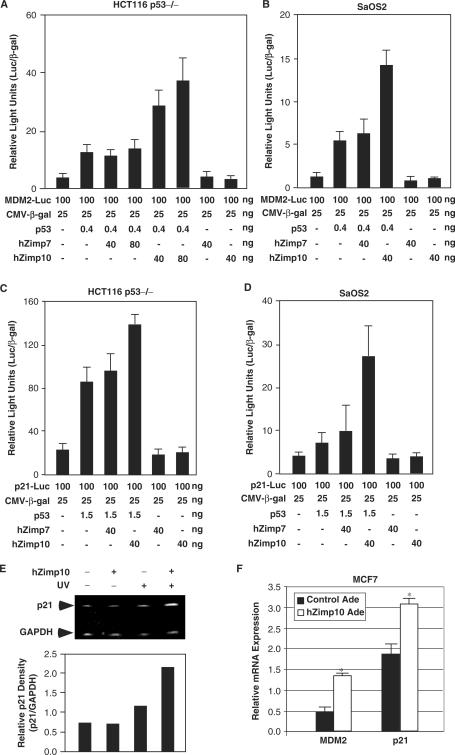Figure 3.
hZimp10 augments p53-mediated transcription. (A) HCT116 p53−/− cells were transiently transfected in 48-well plates with 100 ng of MDM2-Luc, 25 ng of pSV40-β-gal, 0.4 ng of pCMV-p53, and where indicated, 40 or 80 ng of pcDNA3-FLAG-hZimp7 or pcDNA3-FLAG-hZimp10. The total amount of plasmid per well was normalized in all transfections by addition of pcDNA3 empty vector. Luciferase activity is reported as relative light units and represented as mean ± SD. (B) SaOS2 cells were transiently transfected in 48 wells as described above. (C) and (D) Transient transfection assays were performed in HCT116 p53−/− and SaOS2 cells with the p21-Luc reporter cells, respectively. (E) MCF7 cells were infected with either the hZimp10 expression adenovirus or a control virus, and then UV irradiated at 80 J/m2 as indicated. Semi-quantitative RT-PCR with p21 or GAPDH primers was performed on the total RNA isolated from each sample. PCR products were subjected to electrophoresis on a 5% acrylamide gel. The bar graph is a representation of the band intensity measured by densitometry. (F) Quantitative RT-PCR assays were performed to detect the levels of p21 and MDM2 transcripts in MCF cells that were either the hZimp10 expression adenovirus or a control virus. The detailed experimental procedures were described in the Materials and Methods section.

